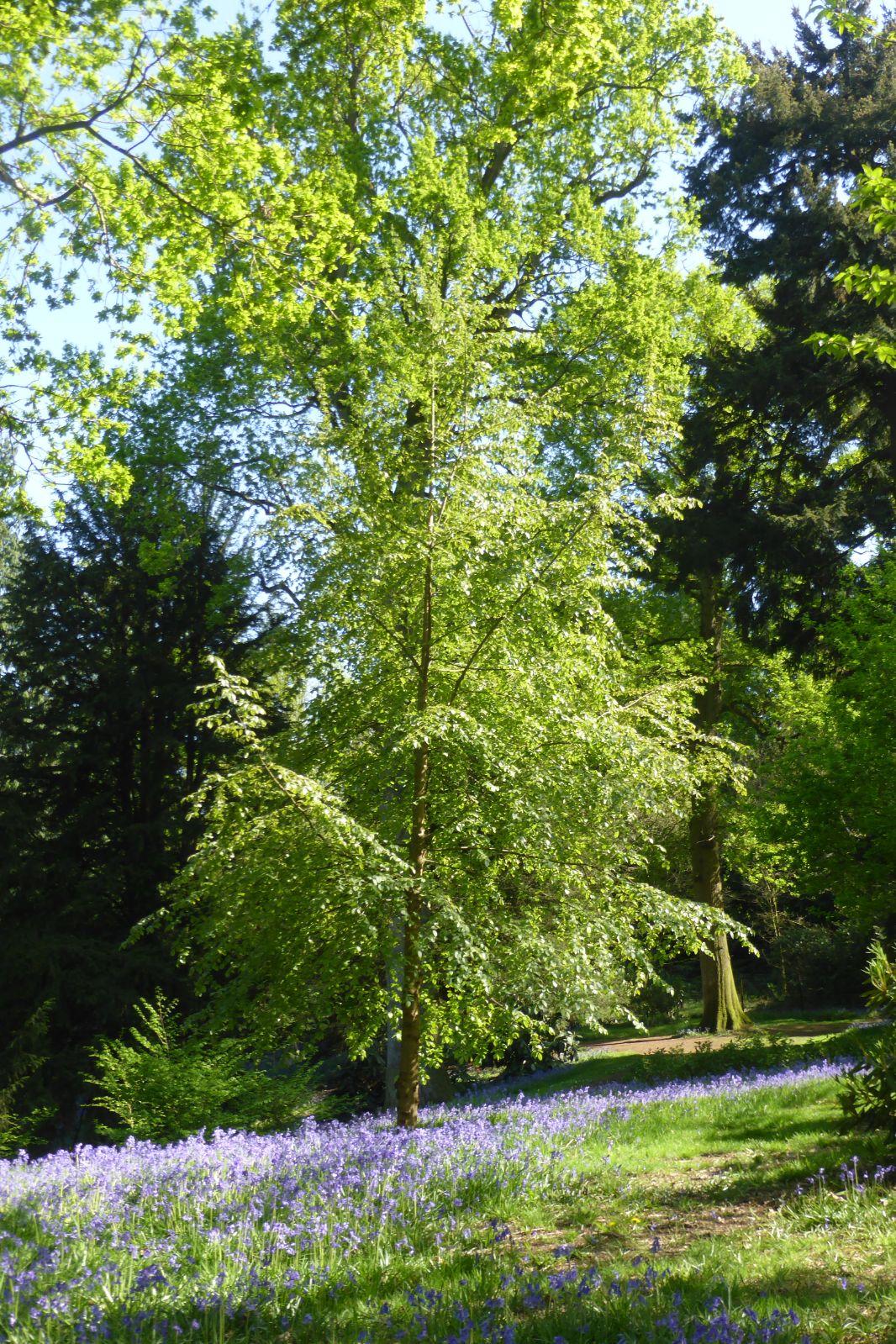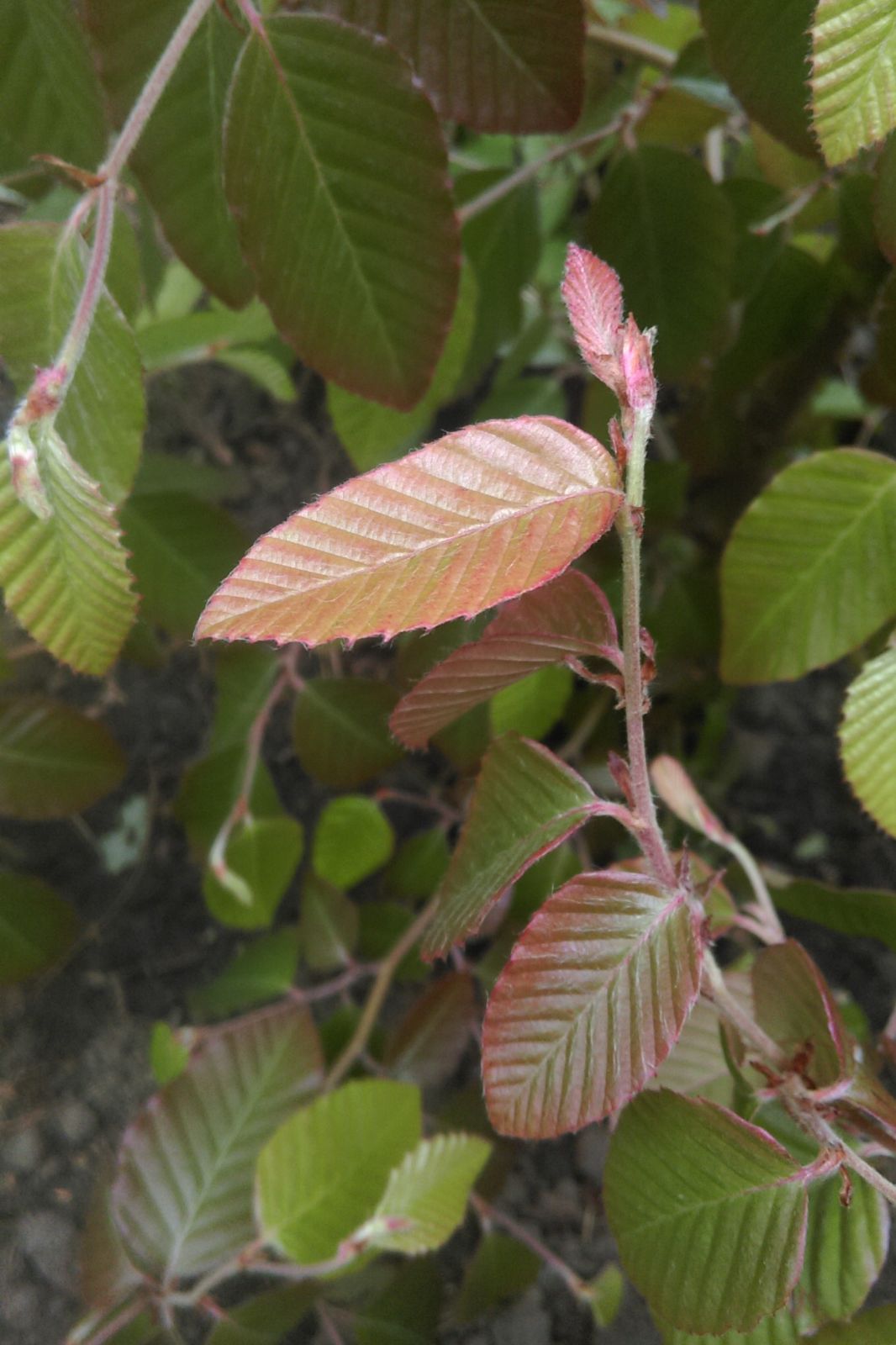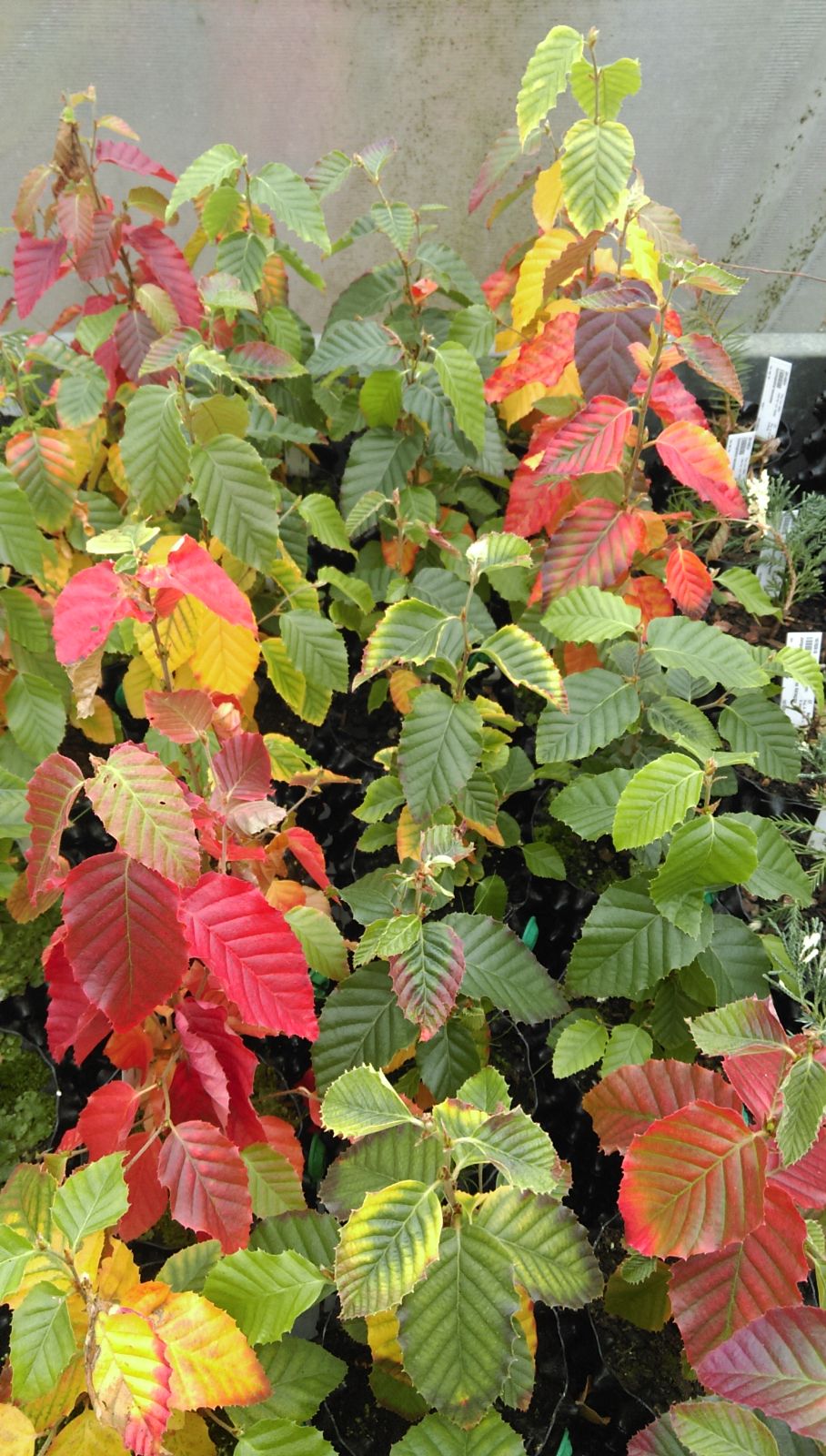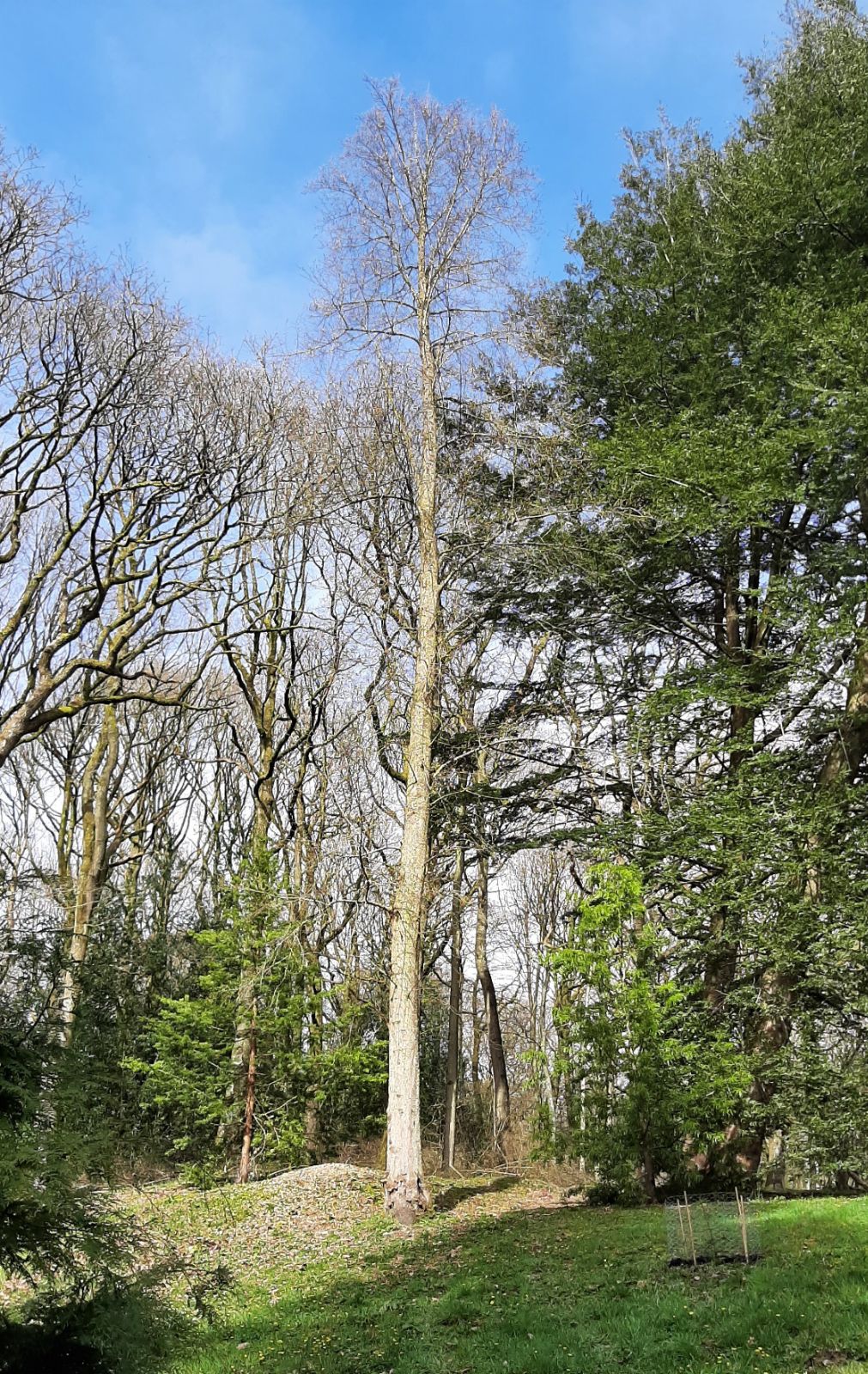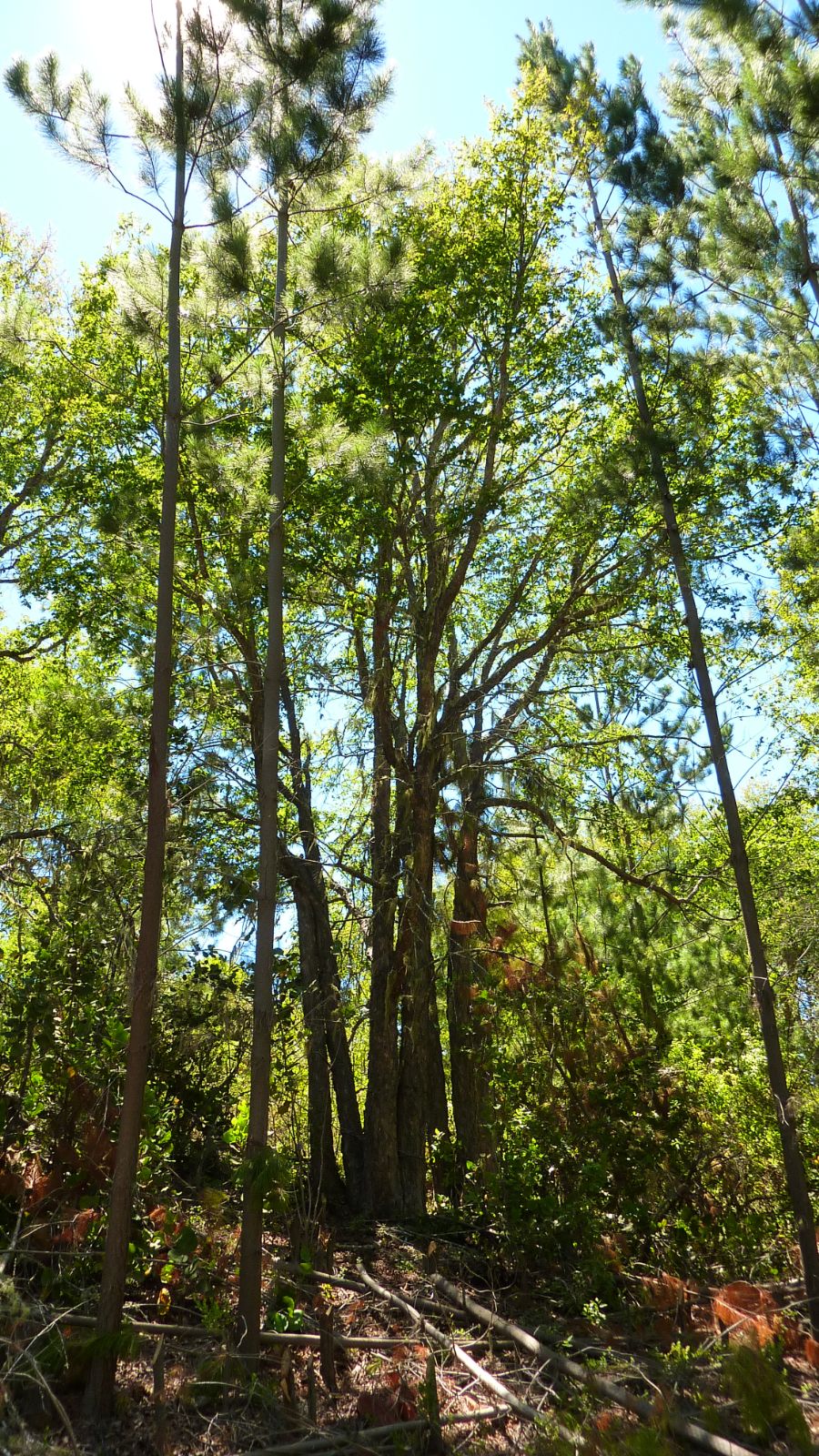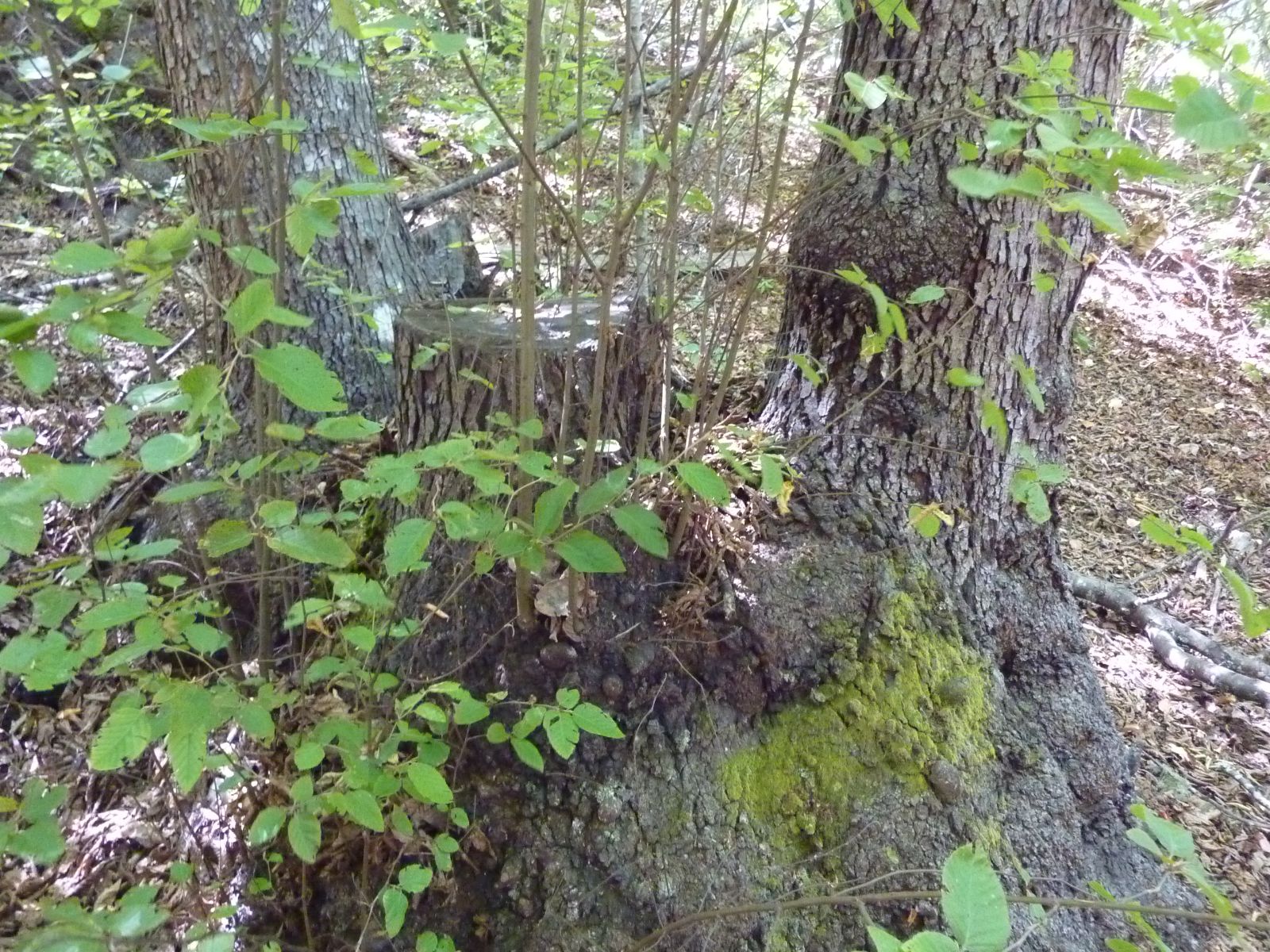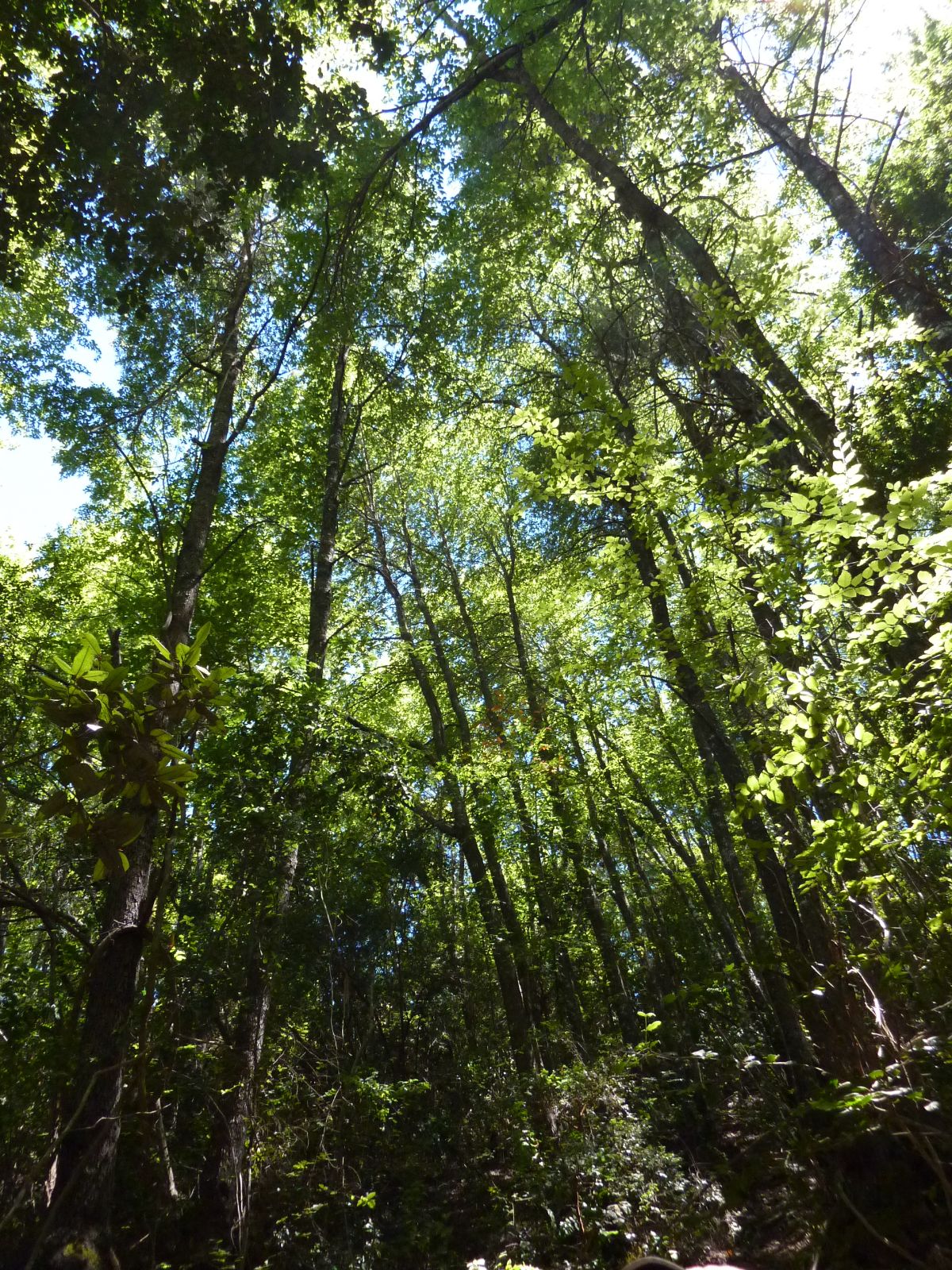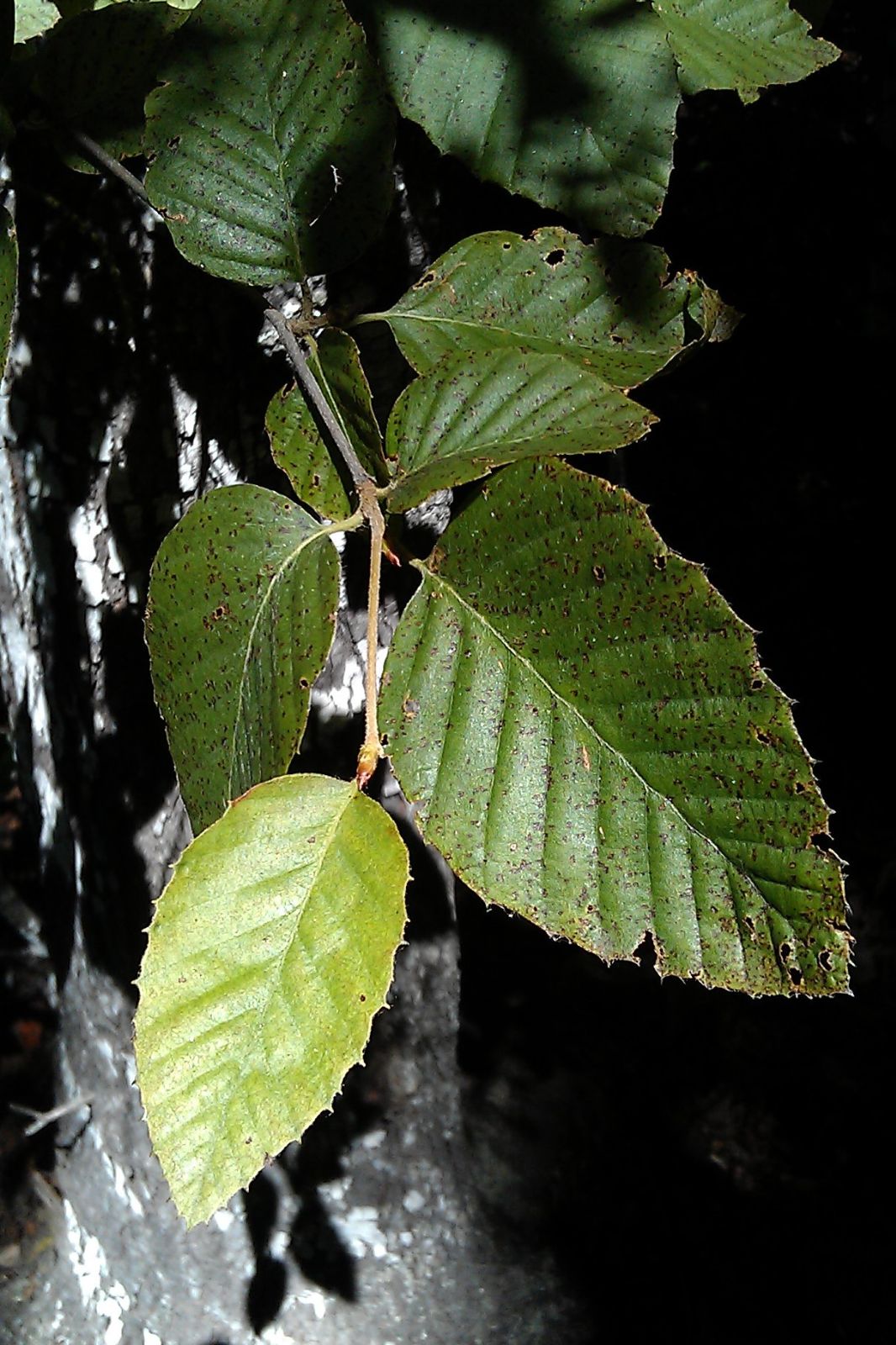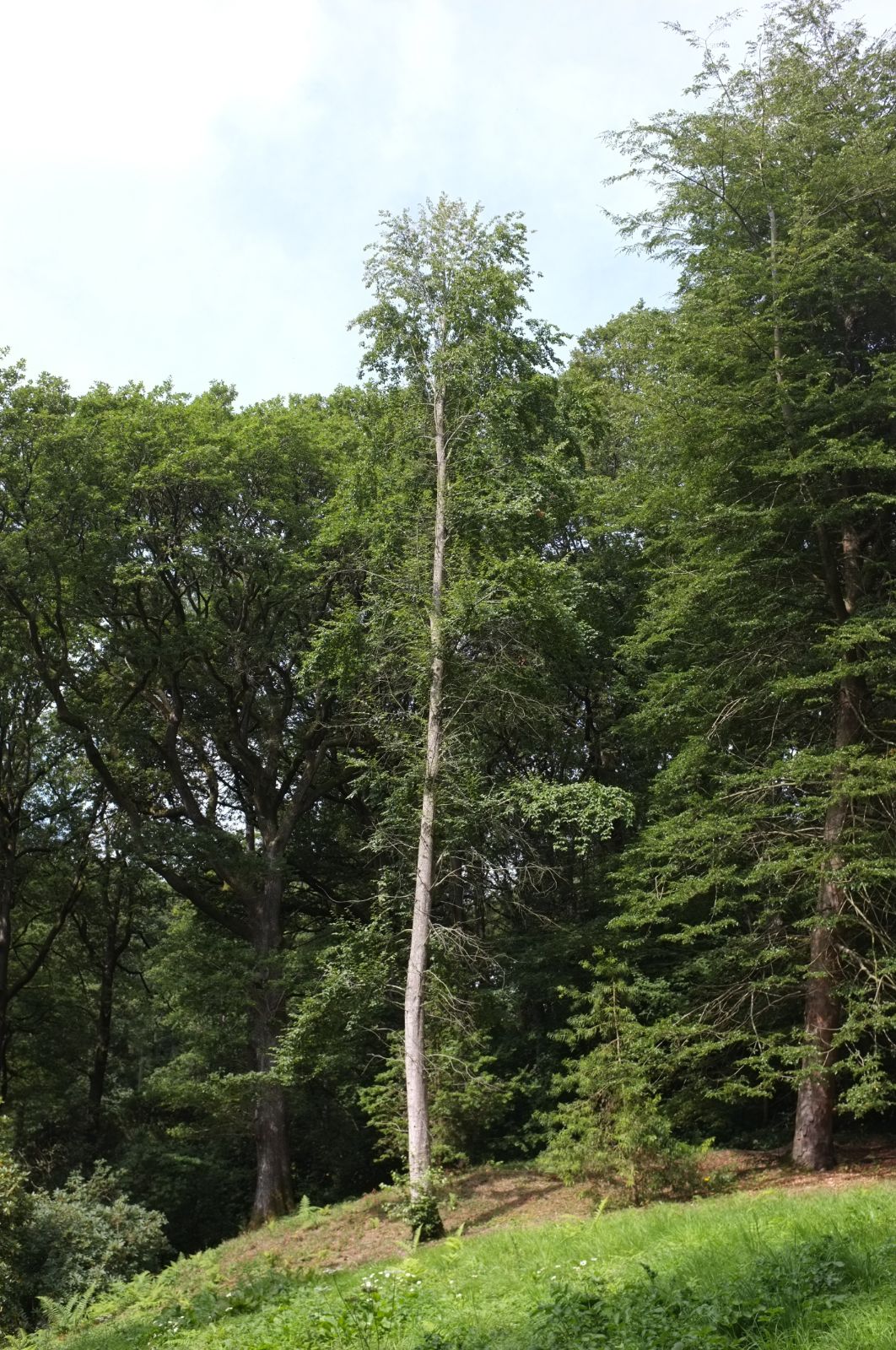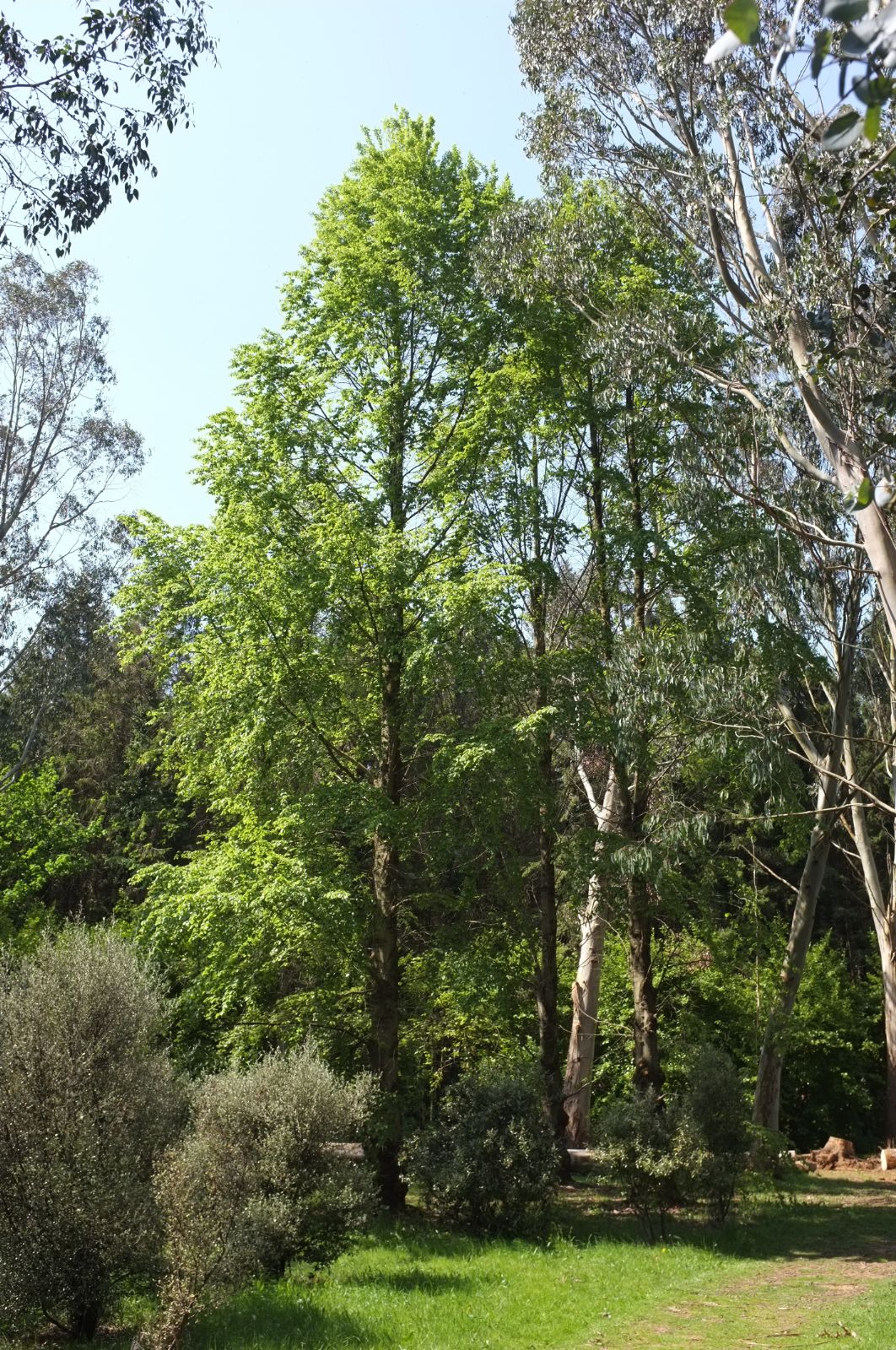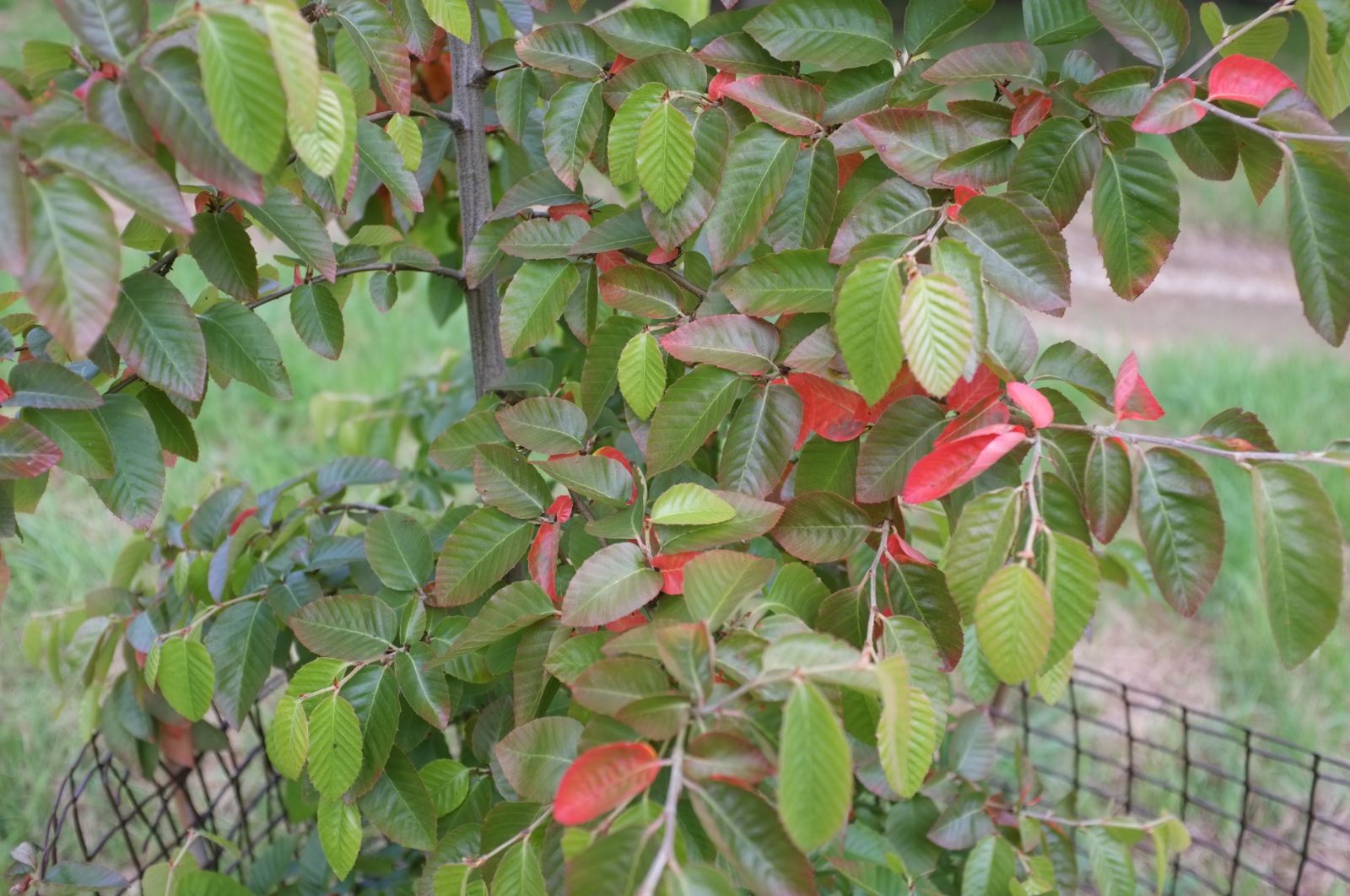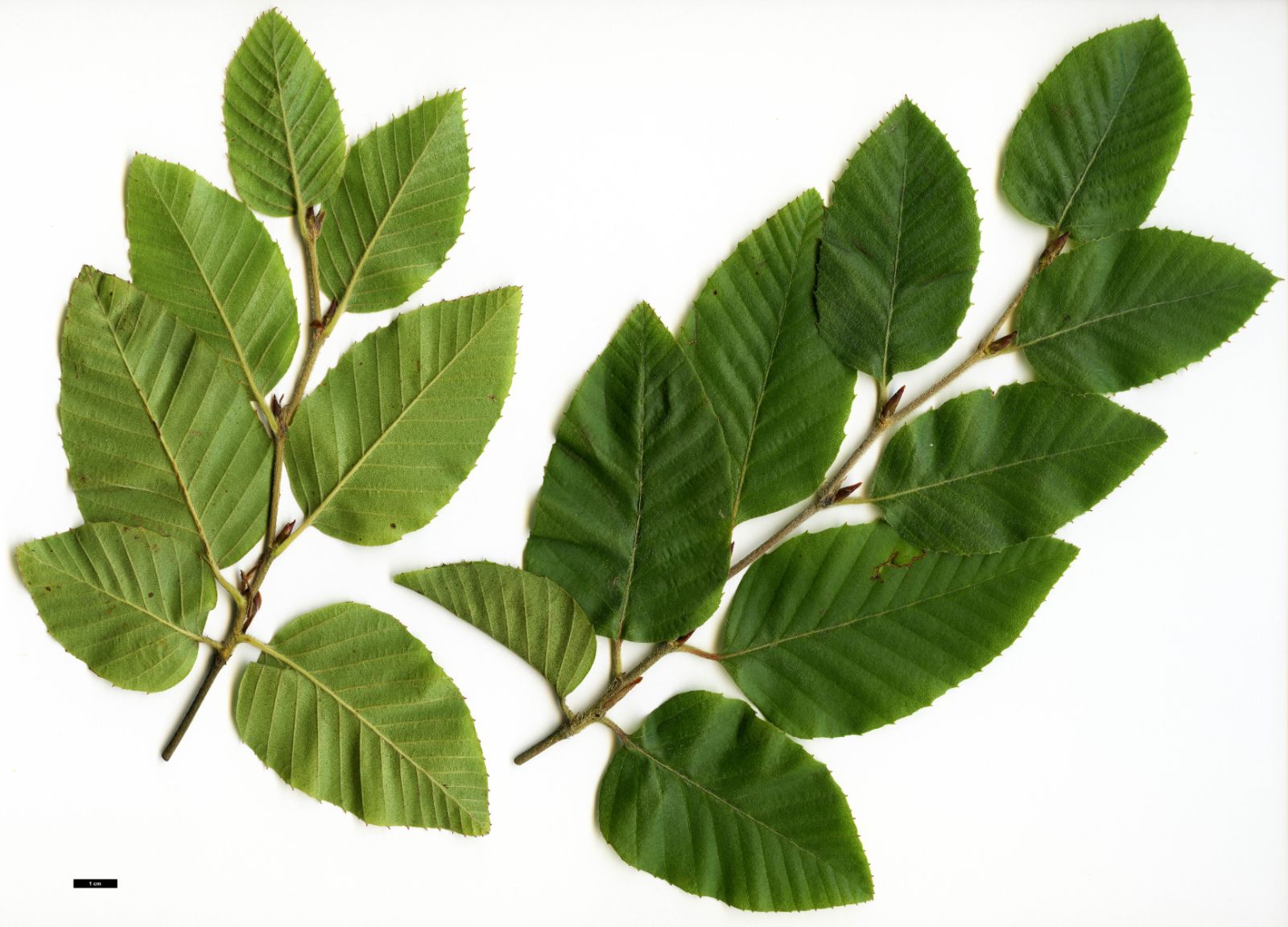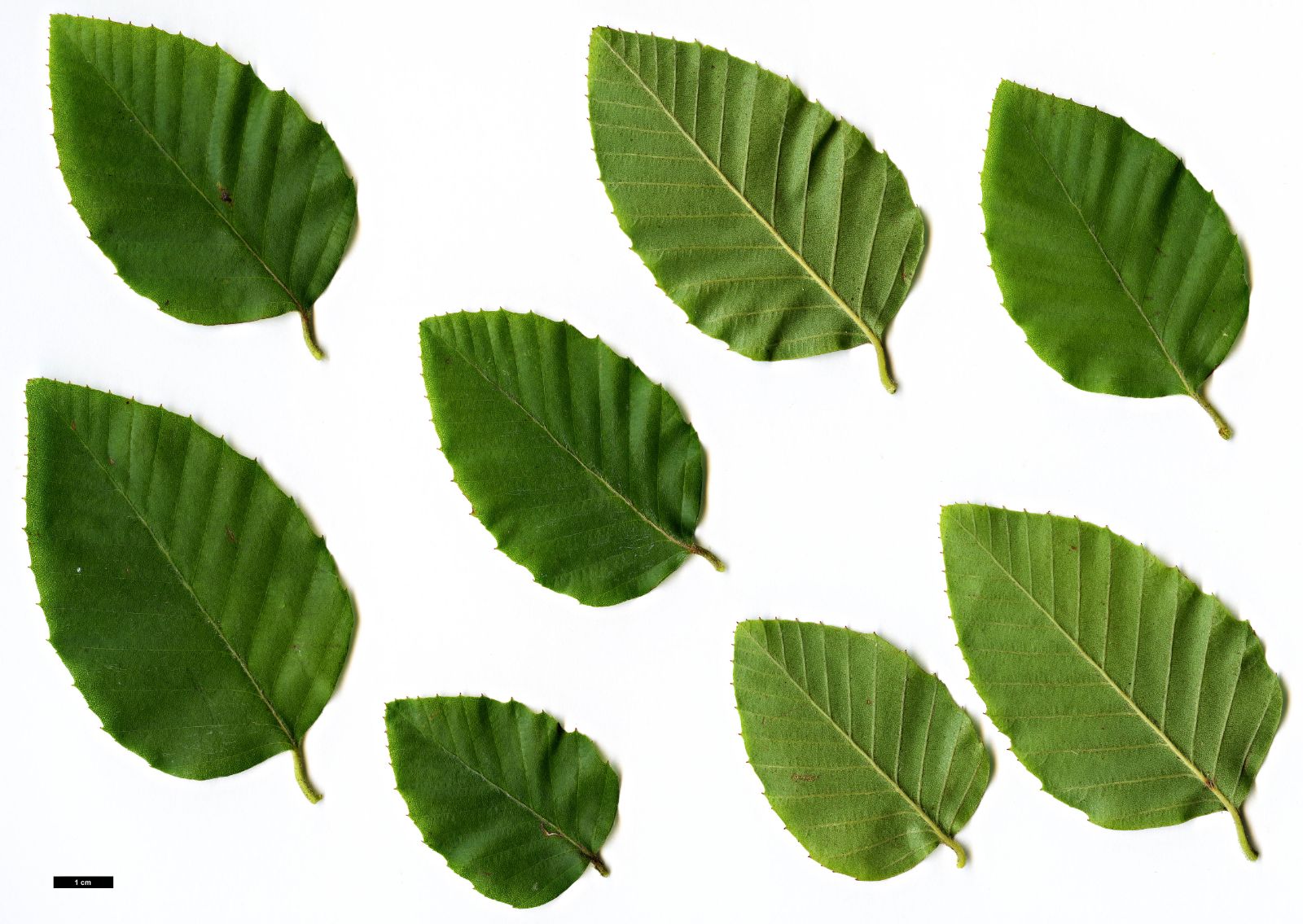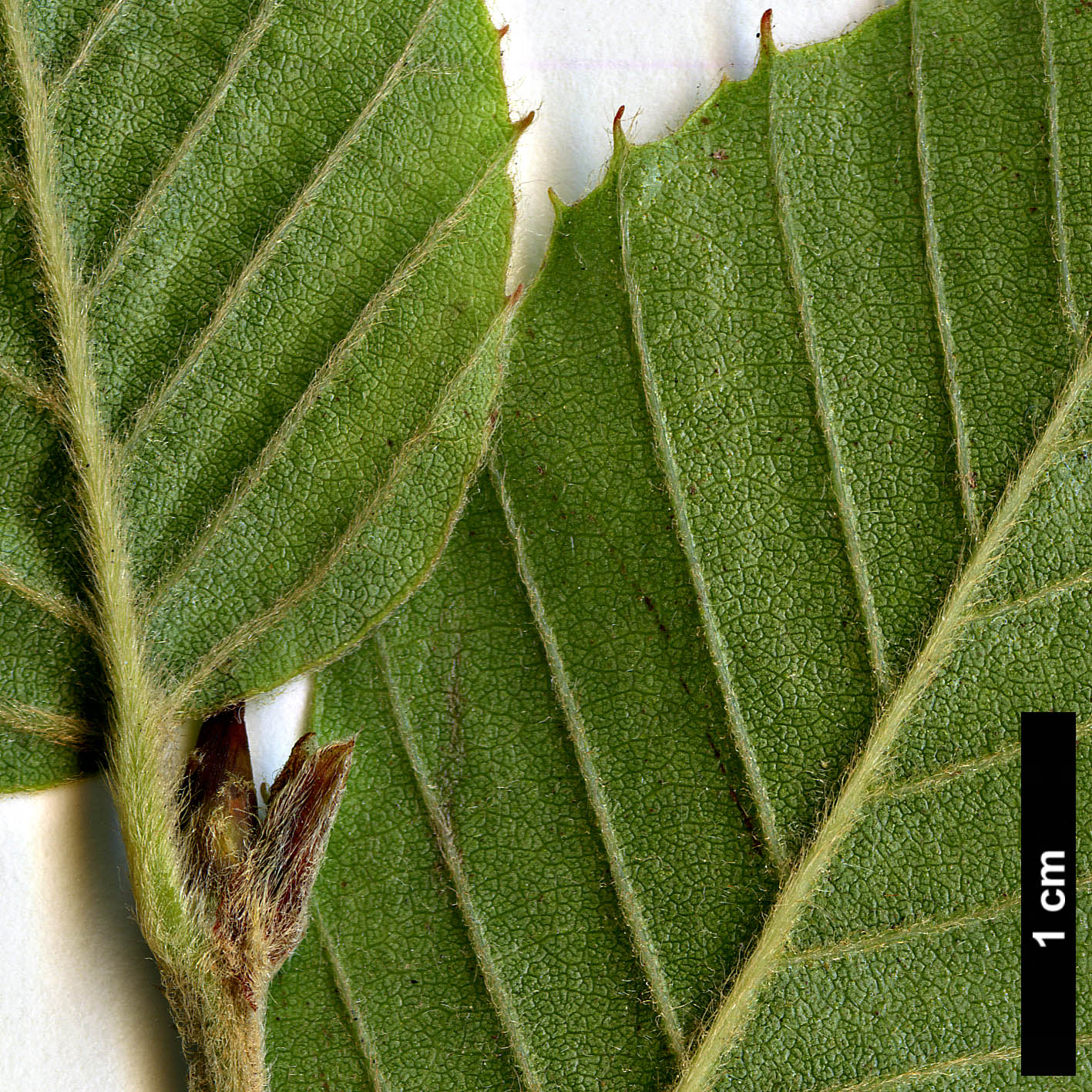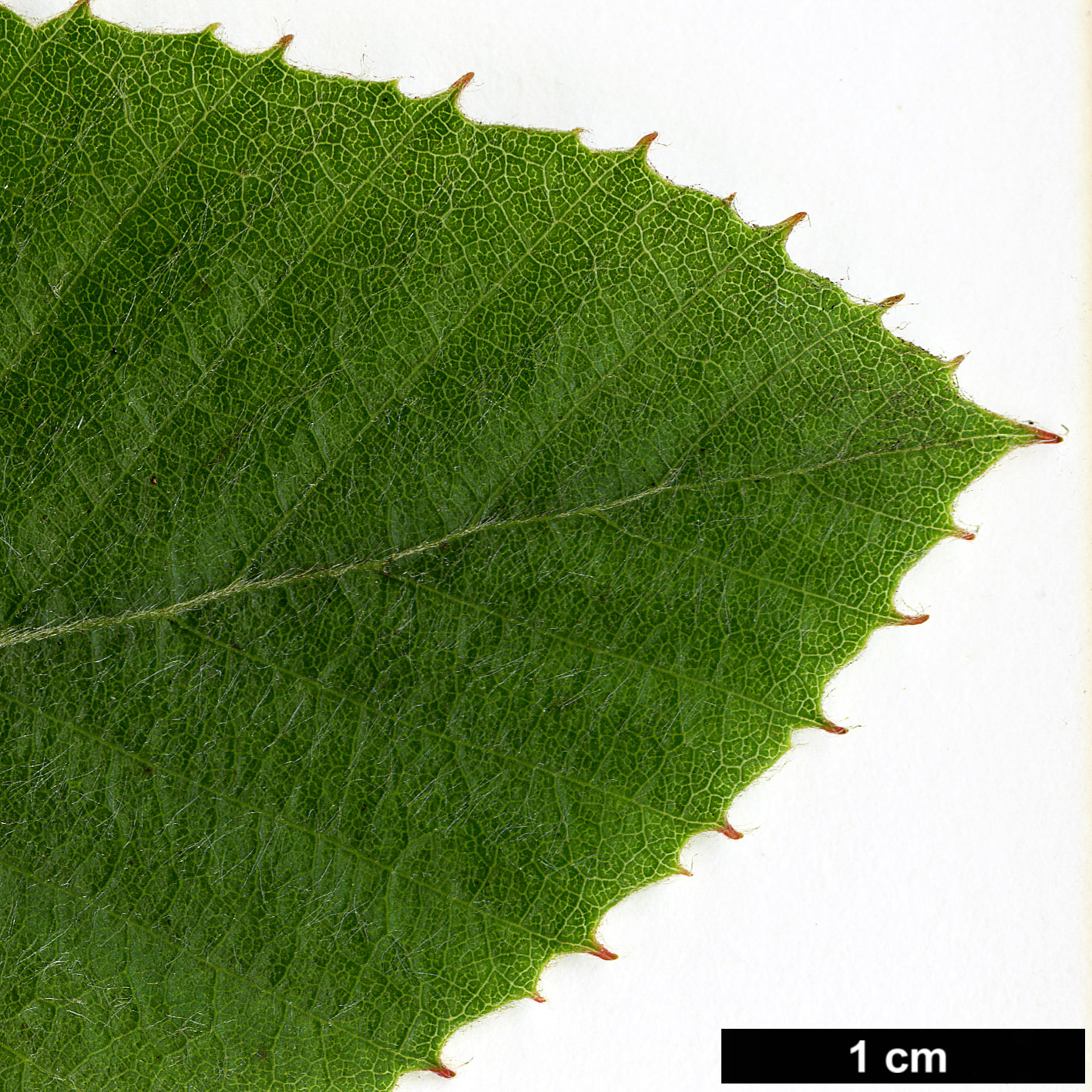Nothofagus alessandrii
Sponsor
Kindly sponsored by
Col. Giles Crisp
Credits
Tom Christian (2020)
Recommended citation
Christian, T. (2020), 'Nothofagus alessandrii' from the website Trees and Shrubs Online (treesandshrubsonline.
Other taxa in genus
- Nothofagus alpina
- Nothofagus antarctica
- Nothofagus betuloides
- Nothofagus × blairii
- Nothofagus cliffortioides
- Nothofagus cunninghamii
- Nothofagus × dodecaphleps
- Nothofagus dombeyi
- Nothofagus fusca
- Nothofagus glauca
- Nothofagus gunnii
- Nothofagus × leonii
- Nothofagus macrocarpa
- Nothofagus menziesii
- Nothofagus menziesii × obliqua
- Nothofagus moorei
- Nothofagus nitida
- Nothofagus obliqua
- Nothofagus pumilio
- Nothofagus solandri
- Nothofagus truncata
Tree to 30 m, to 1 m dbh, single or multi-stemmed. Bark grey, breaking into irregular plates with age. Branchlets brown and tomentose. Leaves deciduous, somewhat leathery by late summer, 7–13 × 4–9 cm, ovate to cordate, rarely lanceolate, immature leaves often flushed red, with golden silky hairs along the veins and midrib on both surfaces and with a fringe of hairs around the margins, mature leaves largely glabrous, but for some golden hairs along the midrib, 11–13 secondary veins on each side of the midrib, margins dentate, with tiny spines terminating the secondary veins, apex acute to acuminate; petiole short, 0.6–1.1 cm long, softly hairy; stipules leathery, oblong to lanceolate and caducous. Leaves turn yellow or orange or red in autumn. Staminate flowers in groups of three (rarely four) and with short peduncles; stamens 10–20, 1–1.4 cm long. Pistillate flowers in groups of three to seven; cupule sessile, 1 cm long, pyramidal, four-valved and covered with woody scales. Nuts three to seven, winged. Flowering September, fruiting January to February (Chile). (Gardner et al. 2006, Rodríguez et al. 1983).
Distribution Chile Región VII (Maule)
Habitat Known from only a few fragmented stands in coastal mountains between c. 140 and 440 m asl, where its woody associate species include several typical of the Mediterranean climate of this part of Chile: Aextoxicon punctatum, Azara petiolaris, Gevuina avellana, Lomatia hirsuta, Nothofagus glauca, Peumus boldus, Persea lingue and Quillaja saponaria.
USDA Hardiness Zone 8
RHS Hardiness Rating H4
Conservation status Endangered (EN)
Taxonomic note The variant spelling ‘alessandri’ was adopted by Heenan and Smissen (as Fuscospora alessandri) in their revision of Nothofagus (Heenan & Smissen 2013) and is also preferred by nothofagus.free.fr and by Google’s spell-checker. This variant may have originally arisen from a misprint in the title (although not the text) of the species’ entry in Wikipedia (https://en.wikipedia.org/wiki/Nothofagus_alessandri).
Nothofagus alessandrii may have the unhappy distinction of being among the most threatened trees of temperate South America. The forests to which it is native suffered ‘unprecedented deforestation’ through the 20th century and now the species exists only in a few, scattered, remnant stands which, if all sewn together, would occupy only a handful of square kilometres. Although some modest experiments at reforestation have been made in recent years (pers. obs. 2013) the ultimate success of these efforts will be unknown for some time. Meanwhile, the encroachment of non-native trees from surrounding plantations poses a significant and ongoing threat both to the remaining fragments of old growth forest and to newly planted stands. (Gardner, Hechenleitner & Hepp 2015). It is no surprise, then, that the species was categorised as Critically Endangered by Gardner et al. (2006), however the assessments in this publication were never processed by the IUCN. The most recent IUCN assessment, based on more up to date data, categorises the species as Endangered (Barstow et al. 2017) but it seems likely that it will ‘eventually slide into Critically Endangered’ (M. Gardner pers. comm. 2020).
This sad demise all took place in fewer than 100 years after the species was first discovered by Professor Marcial Espinosa, who found it while looking for mushrooms near the town of Curepto in 1919. Espinosa took a further nine years to publish his discovery, formally describing the new species in 1928 when he named it after the then President of Chile, Arturo Alessandri Palma (Gardner, Hechenleitner & Hepp 2015).
Both N. alessandrii and N. glauca – another Chilean endemic – were introduced to British cultivation in 1976 (Tuley 1980), at a time when commercial foresters were pursuing a strong interest in Nothofagus generally and trialling many species in experimental plots. An experiment led by the UK’s Forest Research organisation trialled a number of South American Nothofagus species in plots established in 1981, but given its great rarity and the difficulties in acquiring seeds, there was only enough material to plant N. alessandrii in a few locations, and never more than five trees per group (Mason et al. 2018).
Curiously, several also appeared in private collections in the UK at about this time. Trees of uncertain origin arrived at Hergest Croft in 1981 and were planted in 1984. These were supplied by one ‘Mrs Cooper of Cradley’ (W.L. Banks pers. comm. 2020) but the details of their journey from Chile to Hergest via Mrs Cooper are unknown. One of these (tree ID 3241) had exceeded 4 m by 1987. (Hergest Croft Catalogue). By March 2020 the same tree is 22 m × 42 cm dbh (pers. obs.) but this individual is the only surviving example. Another specimen, which has since died, was one of a number of young trees given by Alan Mitchell in the early 1980s when excess material from Forest Research was being informally distributed around worthy collections.
There is a group of similar age, and possibly from the same source, at Plas Newydd on Anglesey, averaging c. 20 m height in 2017, although these too are slowly succumbing to various stresses (pers. obs. 2017) suggesting that in cultivation the species is inclined to grow fast and die young. Another at Grey Abbey in Co Down was a gift from Patrick Forde at Seaforde. This is now a handsome tree of c. 10 m. (D. Montgomery pers. comm. 2020).
While N. alessandrii has been afforded mention in the new Hillier Manual (Edwards & Marshall 2019), in 2020 the species remains incredibly rare and virtually unobtainable. Almost all the young plants in cultivation are traceable to distributions made by the Royal Botanic Garden Edinburgh (RBGE)’s International Conifer Conservation Programme which has made important conservation collections of the species in recent years.
The first batch were grown from seed sent to RBGE from Chile in 2008. Seed was shared with Bedgebury Pinetum and the resulting plants widely distributed by both institutions under the accession numbers 20080791 and 2008/093 respectively. Their performance has been mixed, but where happy they have truly thrived. Many grew very quickly, especially in the south east of England, but several were cut back by cold winters following planting and some never recovered, such as the three trees sent to Nymans. Others, including several at Bedgebury, have since regenerated as multi-stemmed trees, somewhat resembling the coppice trees that can still be seen in the fragments of native forests in Chile (pers. obs. 2013). In Scotland there are two excellent examples from this distribution, one at Murthly Castle, Perthshire, planted in 2009 and 5.5 m tall with a dbh of 11 cm by spring 2019 (pers. obs. April 2019) and the other at Dundonnell House, near Ullapool, planted in 2010 and 6 m × 9 cm dbh by spring 2019 (BG-BASE data 2020).
The very best of the 2008 batch, however, is an exceptional plant at Bowood House, Wiltshire, which was sourced from Bedgebury by Roy Lancaster and later passed to Lord Lansdowne (R. Lancaster pers. comm. 2010). Regular correspondence with Lord Lansdowne has revealed a staggering and sustained rate of growth through the 2010s: planted in late 2008, it was c. 2.3 m tall by the autumn of 2010, and when seen in the autumn of 2017 it had reached c. 10 m × 13 cm dbh (pers. obs. September 2017). Its increase in height has somewhat slowed in the past two years, but it is putting on meaningful girth, being 11.7 m × 22 cm in spring 2020 (Lansdowne, pers. comm. 2020).
This staggering rate of growth prompted the addition of two further plants in the summer of 2018. These had been grown on from collections made in Chile in 2013 by Christian, Gardner and Morales (CGM) under the numbers 47, 48, and 49. Again seed was shared with Bedgebury based on the success of the 2008 introduction, and material of CGM 48 distributed to Bowood from Bedgebury. One of these two new arrivals sadly succumbed to the intense drought of 2019, but by spring 2020 the other was 2.4 m tall. (Lansdowne, pers. comm. 2020).
The CGM collections were, again, widely distributed both by Bedgebury and the RBGE, with many of Bedgebury’s excess seedlings being passed to the National Trust’s Plant Conservation Centre (PCC) in Devon for onward distribution to various NT gardens. Uncontrolled distribution via a third party created something of a record-keeping headache, but thanks to the diligence of the PCC all the resulting plants are now tracked by RBGE. These collections are consequently represented in an extraordinary range of gardens, sometimes as a single plant, for example at Greenway in south Devon, or as a group, for example at Eastnor Castle in Herefordshire. They may be found in collections from the south coast of England to the Highlands of Scotland, and several have supplemented single-tree plantings from the 2008 distribution, for example at Dundonnell House and at Murthly Castle.
However, the erratic performance of so many young trees in recent years makes it hard to characterise the requirements, or even the preferences, of N. alessandrii in cultivation. Well-drained soils seem to be important, certainly, and while the strongest trees may be found in areas with at least moderate summer heat (in a UK context) the fact they have thrived in some very cold parts of Scotland makes further comment in this regard somewhat superfluous.
N. alessandrii is also cultivated in Tasmania, Australia (abc.net.au) and in New Zealand, for example at the Orton Bradley Park near Christchurch (2012 tree list), though no evidence could be found for its occurrence in North American collections. In Tasmania N. alessandrii has hybridised with the New Zealand native N. fusca giving rise to the nothospecies N. × eugenanana (Heenan & Smissen 2013).

